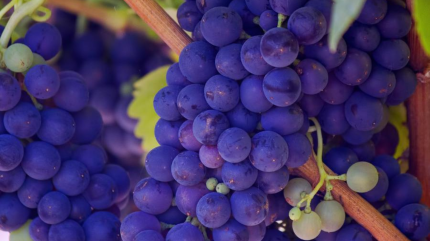
In 2023, EU member states represented 48% of global wine consumption – drinking 107 million hectolitres.
This figure reflected a “marginal” decrease of 1.8% compared to 2022. However, the number was more than 5% below its ten-year average as multiple headwinds buffeted the industry, according to the International Organisation Of Vine and Wine (OIV).
The issue is not Europe-centric. Last year, global wine consumption dropped 2.6% to 221m hectolitres – the lowest volume recorded since 1996.
Whether health trends, bad weather, increasing costs, disinterested ‘Gen-Z’ drinkers, competition from other categories or something else is most to blame – the overall picture is fairly bleak.
In its annual report on the global wine trade, the OIV said 2023 was “defined by the lingering effects of the global inflationary pressures that started in 2022”.
France, Europe’s largest consumer of wine and second largest in the world, drank 2.4% less wine than the year prior, amounting to 24.4m hectoliters.
The country made just over a fifth of the world’s wine – exceeding its five-year average by 8.3% – in 2023. But French winemakers are now tackling oversupplies and falling consumption – in recent years the French government has provided support to wineries to destroy excess stock and pull up vines.
In Italy – Europe’s second-largest wine market – consumption was down 2.5% in volume terms in 2023 to an estimated 21.8m hectolitres (OIV).
Despite this, the number of drinkers did not fall, according to the Unione Italiana Vini (UIV) Observatory. In 2023, it said the country had an estimated 29.4 million wine drinkers – “stable” on 2022.
However, the UIV noted “profound signs of changing habits”, with drinkers becoming “more responsible”. “New wine drinkers” are also less category loyal, the UIV suggested, often “flirting” with other beverages such as apéritifs.
In Germany, consumption also fell last year, dropping 1.6% to 19.1m hectolitres (OIV).
Spain was one of the few large markets that did not see a fall in consumption in 2023, reporting a total consumption volume of 9.8 mhl – a 1.7% increase on 2022. However, this is still below pre-pandemic levels, which surpassed 10m hectolitres in both 2018 and 2019.
Earlier this week, we spoke to the director general of Rioja wine major Familia Martínez Zabala, which said it was investing in white and rosé wine production to try and adapt to changing consumption trends.
“We need to understand that, first of all, global consumption is not going to grow. But, besides that, the consumption trend is going to change and we need to be ready to adapt,” director general Francisco Honrubia said.
The largest falls in European consumption last year were seen in Portugal (down 9.2% to 5.5 million hl) and the Netherlands (also down 9.2%, to 3.3 million hl).
This week, the European Commission followed up on previous discussions of a wine-policy group by calling upon member states to sign up.
The so-called High-Level Group on Wine Policy has been described as a “forum” that will address macro challenges including declining consumption and climate change, and “explore possible solutions”.
The group will meet at least three times and is expected to deliver conclusions and recommendations for future policy by the beginning of 2025.
“Over the past two decades, the EU wine sector has been a success story. Framed by a comprehensive regulatory system, the EU has been leading in the world, with exports that tripled in value over that period,” the Commission’s agriculture and rural-development department said in a statement last week.
“Despite this success, and its significant contribution to EU GDP, the sector is now facing significant challenges due to a long-term decline of domestic consumption, a shift in consumer preferences, and an unstable and less globalised international context affecting our key export markets.
“In addition, the sector faces increasingly unpredictable production conditions and harvests due to climate change.”



